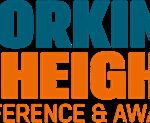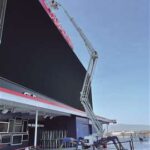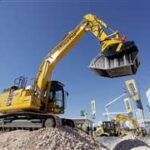Importance of Man Lifts in the Heavy Machinery Industry
In the world of heavy machinery, man lifts (or aerial work platforms) have become an essential piece of equipment. Whether it’s for construction, maintenance, utilities, or entertainment, these versatile machines provide a safe and efficient way to reach elevated work areas. With a variety of models, from scissor lifts to boom lifts, each tailored to specific jobs, they are indispensable tools in many industries. Let’s take a deeper look at why they’re so important and how they contribute to workplace productivity and safety.
What Are Man Lifts?
At their core, man lifts are hydraulic or electric-powered platforms mounted on wheeled or tracked bases. Equipped with extendable arms or booms, they can reach various heights to suit different tasks. Popular types include:
- Scissor lifts: Best for vertical lifting in stable environments.
- Boom lifts: Great for both vertical and horizontal reach.
- Personnel lifts: Compact and ideal for tight spaces.
Each model is designed to meet specific work conditions and challenges.
Budgeting for Man Lifts: What You Need to Consider
When it comes to acquiring a man lift, budget plays a significant role. Here’s how to approach the financial side of things:
-
Upfront vs Long-Term Costs: While a quality lift may come with a higher initial price tag, investing in a durable model can save money over time. Lower maintenance costs and increased uptime make it a smart investment.
-
Consideration of Rental: If a purchase doesn’t fit the budget, rental options allow access to the right lift for short-term projects without the large upfront costs.
It’s important to balance the initial cost with the anticipated returns, factoring in productivity boosts and operational savings.
Maintenance and Safety Tips for Man Lifts
Ensuring safe and efficient use of man lifts involves regular maintenance and adherence to safety protocols. Here’s how to keep things running smoothly:
1. Regular Inspections
Ensure that routine checks are performed to catch issues early. Follow the manufacturer’s maintenance guidelines to keep the equipment in optimal condition.
2. Operator Training
Training is crucial. Operators should undergo certified training on how to use the equipment properly and follow safety standards. Regular refresher courses are a great way to keep skills sharp.
3. Safety Gear and Protocols
Operators must always wear proper safety gear, including harnesses, helmets, and gloves. Educate workers about the risks associated with man lifts and ensure they follow safety guidelines.
4. Avoiding Hazards
Workplace hazards such as tipping, electrical risks, and entanglement must be proactively managed. Risk assessments should be conducted before starting work, and workers should know safe practices to follow.
5. Emergency Procedures
Clear emergency protocols should be established. Workers should know how to evacuate safely and how to respond in case of equipment malfunction.
Investing in Quality Man Lifts: A Long-Term Strategy
Choosing the right man lift isn’t just about buying equipment; it’s about making a long-term investment. Here’s how to ensure your purchase pays off:
1. Reputable Manufacturers
Research manufacturers known for quality and reliability. Look for customer reviews and industry reputation to gauge the durability and performance of their equipment.
2. Warranty and After-Sales Support
Opt for manufacturers who provide warranties and offer strong after-sales support. This ensures you have help in case something goes wrong after your purchase.
3. Resale Value
A high-quality man lift often retains its resale value better than a cheaper, low-quality model. When upgrading, you can recover some of your initial investment.
4. Upgrading Options
Stay ahead of the curve by keeping an eye on the latest man lift technology. Upgrading to newer models can improve safety, productivity, and efficiency over time.
5. Sustainability
With growing emphasis on environmental responsibility, consider eco-friendly models that are energy-efficient and come with low emissions. They help reduce your environmental footprint and contribute to sustainability.
Conclusion
Man lifts have revolutionized how we handle elevated work, making it safer and more efficient. From construction to maintenance, these machines are indispensable for industries requiring access to high areas. By investing in the right equipment, prioritizing safety, and staying on top of maintenance, businesses can ensure that their man lifts provide maximum productivity, safety, and long-term value.
FAQs About Man Lifts
What types of man lifts are available?
There are three main types: scissor lifts, boom lifts, and personnel lifts. Each serves different tasks and work conditions.
How do I choose the right height for my project?
Consider the maximum height needed, any obstructions that may affect access, and ensure the lift can safely reach the area you’re working on.
What safety measures should operators take?
Operators should be properly trained, use the correct safety gear, conduct regular inspections, and follow safety protocols to minimize risk.
Can man lifts be used both indoors and outdoors?
Yes, depending on the model. Some man lifts are designed for indoor work (like those with narrow dimensions), while others are made for outdoor use, particularly on rough terrain.
Are there regulations for using man lifts on construction sites?
Yes, and other organizations have regulations regarding the safe use of man lifts. Compliance with these regulations is crucial for worker safety.




